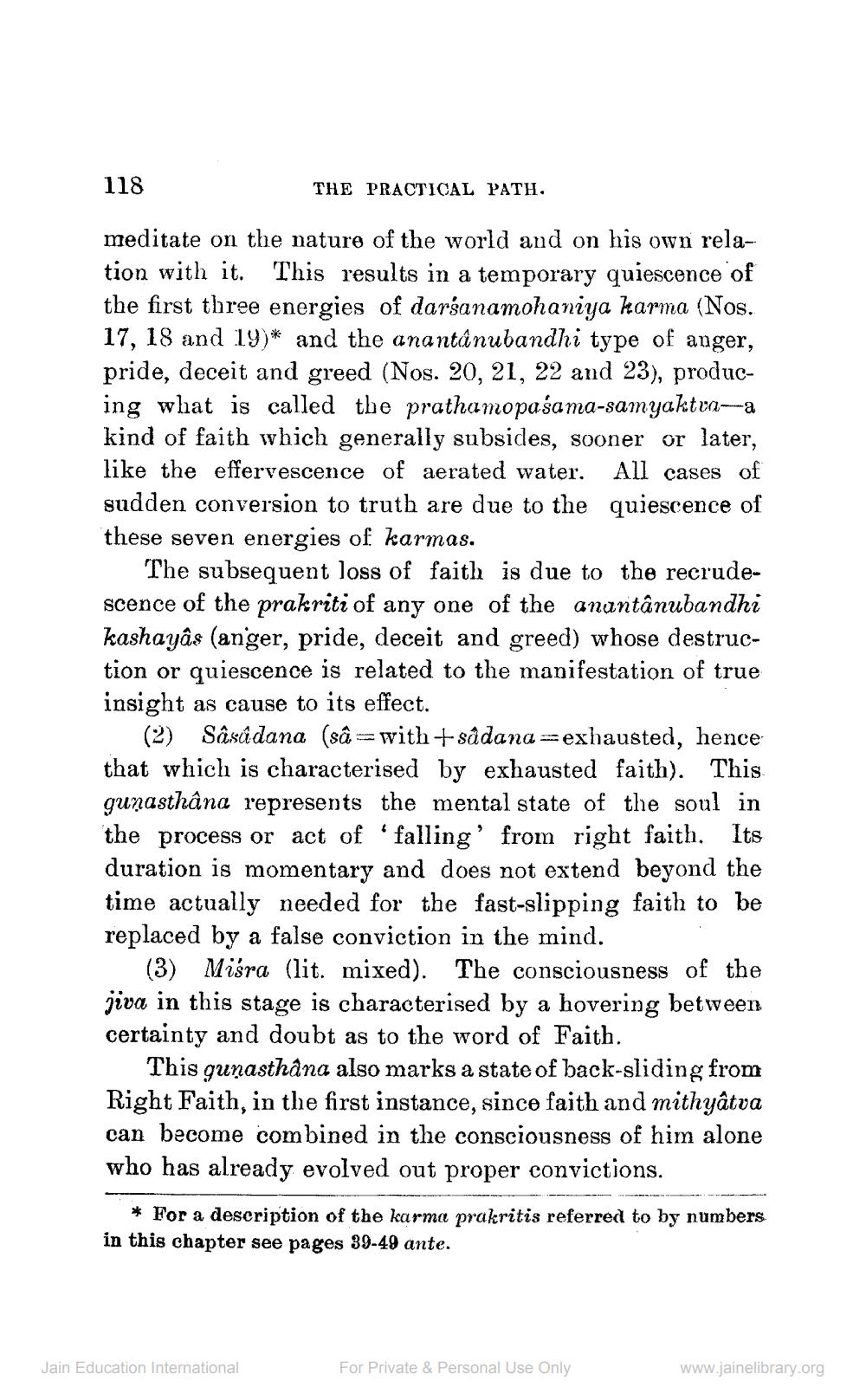________________
118
THE PRACTICAL PATH.
meditate on the nature of the world and on his own relation with it. This results in a temporary quiescence of the first three energies of darśanamohaniya karma (Nos. 17, 18 and 19)* and the anantânubandhi type of anger, pride, deceit and greed (Nos. 20, 21, 22 and 23), producing what is called the prathamopasama-samyaktua-a kind of faith which generally subsides, sooner or later, like the effervescence of aerated water. All cases of sudden conversion to truth are due to the quiescence of these seven energies of karmas.
The subsequent loss of faith is due to the recrudescence of the prakriti of any one of the anantânubandhi kashayâs (anger, pride, deceit and greed) whose destruction or quiescence is related to the manifestation of true insight as cause to its effect.
(2) Sâsådana (sâ==with+sådana=exhausted, hence that which is characterised by exhausted faith). This gunasthâna represents the mental state of the soul in the process or act of 'falling' from right faith. Its duration is momentary and does not extend beyond the time actually needed for the fast-slipping faith to be replaced by a false conviction in the mind.
(3) Misra (lit. mixed). The consciousness of the jiva in this stage is characterised by a hovering between certainty and doubt as to the word of Faith.
This gunasthana also marks a state of back-sliding from Right Faith, in the first instance, since faith and mithyâtva can become combined in the consciousness of him alone who has already evolved out proper convictions.
* For a description of the karma prakritis referred to by numbers in this chapter see pages 39-49 ante.
Jain Education International
For Private & Personal Use Only
www.jainelibrary.org




